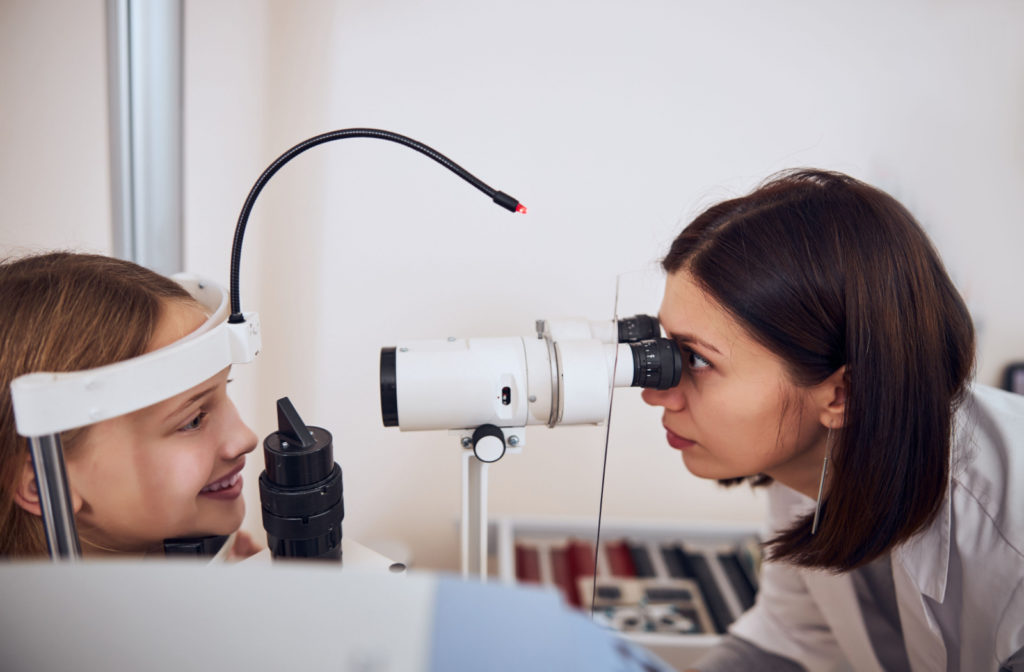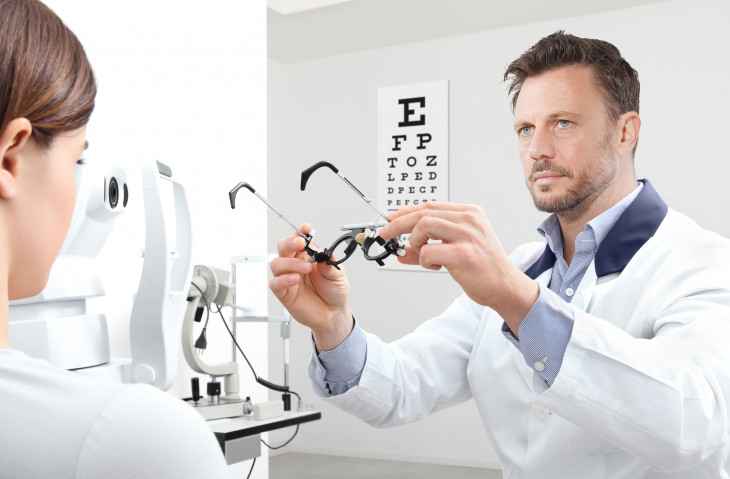Checking Out the Most Recent Technical Improvements in Optometry and What They Mean for Eye Doctors
In the ever-evolving field of optometry, recent technological innovations are improving just how professionals come close to eye treatment. From the accuracy of Optical Coherence Tomography to the nuanced understandings used by AI-driven diagnostic devices, these innovations are establishing brand-new requirements in person assessment and therapy. Teleoptometry is positioned to redefine ease of access, guaranteeing that proficiency goes beyond geographical constraints. As these innovations permeate the method, eye doctors are confronted with the challenge of accepting these tools to boost client outcomes. Yet, the inquiry remains: just how will these technological shifts redefine the duties and duties within the occupation?
Developments in Diagnostic Devices
Progressing the field of optometry, innovations in analysis tools have reinvented the method eye treatment specialists assess and detect aesthetic problems and ocular conditions. The previous years has actually observed substantial technical innovations, enabling more extensive and precise analyses. Optical Coherence Tomography (OCT), for instance, provides high-resolution cross-sectional images of the retina, allowing for the early discovery of diseases such as glaucoma and age-related macular degeneration. This non-invasive imaging method has come to be vital in modern optometric method.
An additional trick technology is the intro of advanced corneal topography systems, which map the surface area curvature of the cornea with accuracy. These tools are especially beneficial for fitting call lenses and identifying corneal disorders. Electronic retinal imaging has actually changed typical ophthalmoscopy, supplying detailed, scenic views of the retina that assist in extensive aesthetic assessments.
The development of wavefront aberrometry has likewise been essential, making it possible for the evaluation of refractive errors with unparalleled accuracy (Eye Doctor). This modern technology helps in customizing restorative lenses and boosting surgical results for refractive surgical treatments. Collectively, these analysis advancements empower optometrists to supply premium individual treatment, making certain very early treatment and tailored therapy methods, inevitably boosting visual health end results
AI in Patient Administration
Building on the structure of advanced diagnostic devices, the incorporation of man-made knowledge (AI) in patient management stands for a transformative leap for optometry. AI systems are increasingly employed to improve efficiency, precision, and customization in patient treatment.
In addition, AI-driven platforms help with structured person interactions and administrative procedures. Automated scheduling, virtual appointments, and individualized follow-up plans not only enhance client fulfillment yet also optimize time monitoring for professionals. These systems can triage people based upon the urgency of their conditions, ensuring that those in important demand receive timely attention.
Furthermore, AI boosts decision-making by offering optometrists with evidence-based referrals and treatment paths. By integrating information from digital health records, AI tools offer insights that educate scientific decisions, reducing the danger of errors and enhancing client end results. As AI remains to develop, its role in client management will likely broaden, reshaping the landscape of optometric treatment.
Advancements in Retinal Imaging
In the realm of optometry, retinal imaging has actually seen exceptional technical innovations that are improving analysis capabilities and client treatment. Technologies such as Optical Coherence Tomography (OCT) and fundus digital photography have transformed just how optometrists imagine and examine the retina.
Boosted imaging methods like OCT angiography are additional refining diagnostic precision. Opticore Optometry. Such advancements facilitate the identification of min retinal modifications that can signify illness development.
Additionally, improvements in expert system are boosting retinal imaging by allowing automated analysis of big datasets. These systems assist eye doctors in identifying patterns indicative of pathology, therefore boosting analysis accuracy and efficiency. Jointly, these advancements are transforming retinal imaging into a cornerstone of modern-day eye treatment, improving end results and increasing therapeutic possibilities.
Teleoptometry's Expanding Function
Teleoptometry is progressively becoming a vital element of eye treatment, driven by advancements in electronic interaction and diagnostic devices. As optometry accepts electronic improvement, teleoptometry facilitates remote examinations, allowing eye doctors to extend their services past typical boundaries. This is especially useful in country and underserved locations where accessibility to specialized eye treatment is frequently restricted. By leveraging high-resolution video clip conferencing and advanced retinal imaging, optometrists can conduct thorough eye tests from afar, guaranteeing prompt diagnosis and therapy.
The integration of fabricated intelligence (AI) more improves teleoptometry, allowing the evaluation of visual data and helping in the detection of eye conditions such as glaucoma and diabetic retinopathy. AI-powered algorithms can rapidly translate blog here intricate imaging data, providing optometrists with important insights that bolster professional decision-making.
In addition, teleoptometry supports connection of care via smooth assimilation with digital wellness records (EHRs), permitting eye doctors to preserve detailed client backgrounds. When consulting with different experts., this makes certain that patients obtain customized and consistent treatment also.
Despite these benefits, obstacles remain, consisting of ensuring information protection and handling individual assumptions. Teleoptometry represents a significant stride in the direction of more accessible, effective, and patient-centered eye care. As innovation progresses, its duty is positioned to broaden additionally.

Future Patterns in Eye Treatment
A myriad of innovative trends is readied to improve the future of eye treatment, driven by technological improvements and the evolving demands of clients. One substantial fad is the integration of expert system (AI) in diagnostics, which promises to improve the precision and performance of eye assessments. AI formulas can analyze large quantities of information from retinal photos, possibly my website finding problems like diabetic person retinopathy and glaucoma earlier than conventional methods.
In addition, customized medication is getting traction in optometry, with hereditary testing informing personalized treatment plans. This method intends to enhance client end results by customizing interventions to private genetic profiles. Wearable modern technology, such as clever get in touch with lenses, is likewise imminent, supplying real-time monitoring of intraocular pressure or glucose degrees, therefore supplying continuous insights right into systemic and ocular wellness.
The fostering of augmented reality (AR) and online truth (VR) in training and person education is another emerging trend. These investigate this site innovations offer immersive experiences that can boost understanding and skills both for eye doctors and individuals. As these patterns advance, eye doctors have to stay abreast of technological developments to supply cutting-edge care, guaranteeing better patient outcomes and complete satisfaction in the dynamic landscape of eye treatment.
Final Thought

Collectively, these diagnostic innovations equip optometrists to supply superior person treatment, guaranteeing very early intervention and customized treatment techniques, inevitably enhancing visual health and wellness results.

As these modern technologies continue to progress, eye doctors have to adapt and incorporate them into method, inevitably optimizing process efficiency and boosting the requirement of eye care delivered to patients.